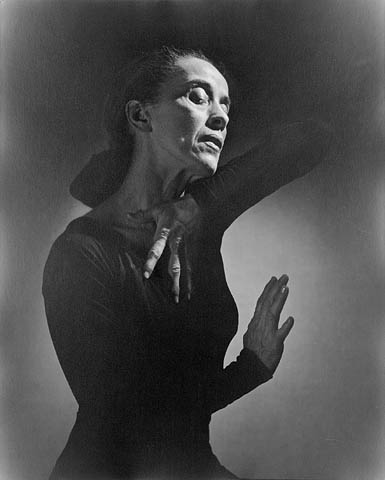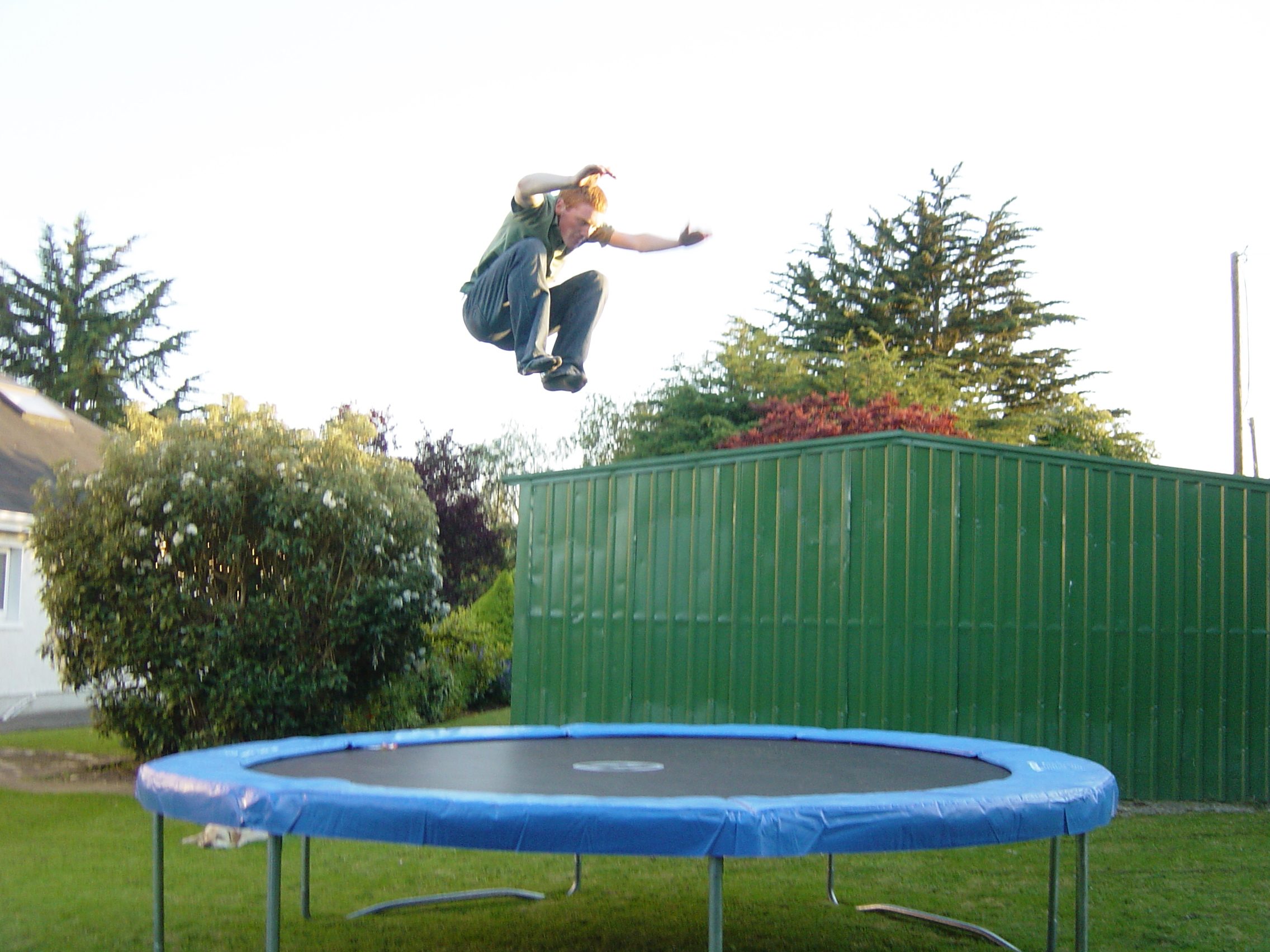|
Aerial Dance
Aerial modern dance is a subgenre of modern dance first recognized in the United States in the 1970s. The choreography incorporates an apparatus that is often attached to the ceiling, allowing performers to explore space in three dimensions. The ability to incorporate vertical, as well as horizontal movement paths, allows for innovations in choreography and movement. Overview There are two types of aerial dance. In vertical dance a dancer is suspended in a harness from a rope or cable and explores the difference in gravity, weightlessness and varied movement possibilities offered by the suspended state. In the second type a dancer or acrobat intertwines the use of the floor or a wall with their aerial apparatus. The first utilizes the strength and expression of dance with an altered state to communicate contemporary ideas. In the second, the dancer uses dance as a way to indicate that their work is less trick-based than circus arts, and in some cases hopes that disassociating ... [...More Info...] [...Related Items...] OR: [Wikipedia] [Google] [Baidu] |
Gymnastics
Gymnastics is a type of sport that includes physical exercises requiring balance, strength, flexibility, agility, coordination, dedication and endurance. The movements involved in gymnastics contribute to the development of the arms, legs, shoulders, back, chest, and abdominal muscle groups. Gymnastics evolved from exercises used by the ancient Greeks that included skills for mounting and dismounting a horse, and from circus performance skills. The most common form of competitive gymnastics is artistic gymnastics (AG), which consists of, for women (WAG), the events floor, vault, uneven bars, and beam; and for men (MAG), the events floor, vault, rings, pommel horse, parallel bars, and horizontal bar. The governing body for gymnastics throughout the world is the Fédération Internationale de Gymnastique (FIG). Eight sports are governed by the FIG, which include gymnastics for all, men's and women's artistic gymnastics, rhythmic gymnastics, trampolining (including double mini-t ... [...More Info...] [...Related Items...] OR: [Wikipedia] [Google] [Baidu] |
Modern Dance
Modern dance is a broad genre of western concert or theatrical dance which included dance styles such as ballet, folk, ethnic, religious, and social dancing; and primarily arose out of Europe and the United States in the late 19th and early 20th centuries. It was considered to have been developed as a rejection of, or rebellion against, classical ballet, and also a way to express social concerns like socioeconomic and cultural factors. In the late 19th century, modern dance artists such as Isadora Duncan, Maud Allan, and Loie Fuller were pioneering new forms and practices in what is now called aesthetic or free dance. These dancers disregarded ballet's strict movement vocabulary (the particular, limited set of movements that were considered proper to ballet) and stopped wearing corsets and pointe shoes in the search for greater freedom of movement. Throughout the 20th century, sociopolitical concerns, major historical events, and the development of other art forms contributed to ... [...More Info...] [...Related Items...] OR: [Wikipedia] [Google] [Baidu] |
Aerial Silk
Aerial silks (also known as aerial contortion, aerial ribbons, aerial tissues, fabric, ribbon, or ''tissu'') is a type of performance in which one or more artists perform aerial acrobatics while hanging from a specialist fabric. The fabric may be hung as two pieces, or a single piece, folded to make a loop, classified as hammock silks. Performers climb the suspended fabric without the use of safety lines and rely only on their training and skill to ensure safety. They use the fabric to wrap, suspend, drop, swing, and spiral their bodies into and out of various positions. The fabric may also be used to fly through the air, striking poses and figures. Some performers use rosin (dried or mixed with rubbing alcohol) on their hands and feet to increase the friction and grip on the fabric. Aerial silks is a demanding art and requires a high degree of strength, power, flexibility, courage, stamina, and grace to practice. Tricks The three main categories of tricks are climbs, wraps, a ... [...More Info...] [...Related Items...] OR: [Wikipedia] [Google] [Baidu] |
Trampoline
A trampoline is a device consisting of a piece of taut, strong fabric stretched between a steel frame using many coiled spring (device), springs. Not all trampolines have springs, as the Springfree Trampoline uses glass-reinforced plastic rods. People bounce on trampolines for recreational and competitive purposes. The fabric that users bounce on (commonly known as the "bounce mat" or "trampoline bed") is not elastic itself; the elasticity is provided by the springs that connect it to the frame, which store potential energy. History Early trampoline-like devices A game similar to trampolining was developed by the Inuit, who would toss blanket dancers into the air on a walrus skin one at a time (see Nalukataq) during a spring celebration of whale harvest. There is also some evidence of people in Europe having been tossed into the air by a number of people holding a blanket. Mak in the Wakefield Mystery Play ''The Second Shepherds' Play'', and Sancho Panza in ''Don Quixote' ... [...More Info...] [...Related Items...] OR: [Wikipedia] [Google] [Baidu] |
Canyon
A canyon (from ; archaic British English spelling: ''cañon''), or gorge, is a deep cleft between escarpments or cliffs resulting from weathering and the erosion, erosive activity of a river over geologic time scales. Rivers have a natural tendency to cut through underlying surfaces, eventually wearing away rock layers as sediments are removed downstream. A river bed will gradually reach a baseline elevation, which is the same elevation as the body of water into which the river drains. The processes of weathering and erosion will form canyons when the river's River source, headwaters and estuary are at significantly different elevations, particularly through regions where softer rock layers are intermingled with harder layers more resistant to weathering. A canyon may also refer to a rift between two mountain peaks, such as those in ranges including the Rocky Mountains, the Alps, the Himalayas or the Andes. Usually, a river or stream carves out such splits between mountains. Examp ... [...More Info...] [...Related Items...] OR: [Wikipedia] [Google] [Baidu] |
Climbing
Climbing is the activity of using one's hands, feet, or any other part of the body to ascend a steep topographical object that can range from the world's tallest mountains (e.g. the eight thousanders), to small boulders. Climbing is done for locomotion, sporting recreation, and for competition, and is also done in trades that rely on ascension; such as emergency rescue and military operations. Climbing is done indoors and outdoors and on natural (e.g. rock and ice) and artificial surfaces. Professional mountain guides or rock climbing guides (e.g. the UIAGM), were a significant element in developing the popularity of the sport in the natural environment, and remain so today. Since the 1980s, the development of competition climbing and the availability of artificial climbing walls have dramatically increased the popularity of rock climbing as a sport and led to the emergence of professional rock climbers, such as Wolfgang Güllich, Chris Sharma, Lynn Hill and Catherine ... [...More Info...] [...Related Items...] OR: [Wikipedia] [Google] [Baidu] |
Society
A society is a group of individuals involved in persistent social interaction, or a large social group sharing the same spatial or social territory, typically subject to the same political authority and dominant cultural expectations. Societies are characterized by patterns of relationships (social relations) between individuals who share a distinctive culture and institutions; a given society may be described as the sum total of such relationships among its constituent of members. In the social sciences, a larger society often exhibits stratification or dominance patterns in subgroups. Societies construct patterns of behavior by deeming certain actions or concepts as acceptable or unacceptable. These patterns of behavior within a given society are known as societal norms. Societies, and their norms, undergo gradual and perpetual changes. Insofar as it is collaborative, a society can enable its members to benefit in ways that would otherwise be difficult on an individua ... [...More Info...] [...Related Items...] OR: [Wikipedia] [Google] [Baidu] |
Architecture
Architecture is the art and technique of designing and building, as distinguished from the skills associated with construction. It is both the process and the product of sketching, conceiving, planning, designing, and constructing buildings or other structures. The term comes ; ; . Architectural works, in the material form of buildings, are often perceived as cultural symbols and as works of art. Historical civilizations are often identified with their surviving architectural achievements. The practice, which began in the prehistoric era, has been used as a way of expressing culture for civilizations on all seven continents. For this reason, architecture is considered to be a form of art. Texts on architecture have been written since ancient times. The earliest surviving text on architectural theories is the 1st century AD treatise '' De architectura'' by the Roman architect Vitruvius, according to whom a good building embodies , and (durability, utility, and beauty). ... [...More Info...] [...Related Items...] OR: [Wikipedia] [Google] [Baidu] |
History
History (derived ) is the systematic study and the documentation of the human activity. The time period of event before the History of writing#Inventions of writing, invention of writing systems is considered prehistory. "History" is an umbrella term comprising past events as well as the memory, discovery, collection, organization, presentation, and interpretation of these events. Historians seek knowledge of the past using historical sources such as written documents, oral accounts, art and material artifacts, and ecological markers. History is not complete and still has debatable mysteries. History is also an Discipline (academia), academic discipline which uses narrative to describe, examine, question, and analyze past events, and investigate their patterns of cause and effect. Historians often debate which narrative best explains an event, as well as the significance of different causes and effects. Historians also debate the historiography, nature of history as an end in ... [...More Info...] [...Related Items...] OR: [Wikipedia] [Google] [Baidu] |
Sally Jacques
Sally may refer to: People *Sally (name), a list of notable people with the name Military *Sally (military), an attack by the defenders of a town or fortress under siege against a besieging force; see sally port *Sally, the Allied reporting name for the Imperial Japanese Army's World War II Mitsubishi Ki-21 bomber Writings *''Sally'', a detective novel by E.V. Cunningham (aka Howard Fast) * "Sally" (short story), by Isaac Asimov *"Sally", a poem by Patti Smith from her book '' Seventh Heaven'' Music * Sally (band), an indie-rock band from Chicago, Illinois * "Sally" (Gogol Bordello song), 2005 * "Sally" (Gracie Fields song), first performed in the film ''Sally in Our Alley'', 1931 * "Sally" (Hardwell song), 2015 * "Sally" (Kerbdog song), 1996 * "Sally", a song by Anthony Phillips from ''Invisible Men'', 1983 * "Sally", a song by Carmel, 1986 * "Sally", a song by Foxboro Hot Tubs from ''Stop Drop and Roll!!!'', 2008 * "Sally", a song by Grand Funk Railroad from ''Born to Di ... [...More Info...] [...Related Items...] OR: [Wikipedia] [Google] [Baidu] |
Project Bandaloop
Project Bandaloop, now named BANDALOOP is an aerial dance company, founded in 1991 by Amelia Rudolph, the company combines dance with rock climbing technology, sport, ritual, and environmental awareness. See also *Aerial Dance Aerial modern dance is a subgenre of modern dance first recognized in the United States in the 1970s. The choreography incorporates an apparatus that is often attached to the ceiling, allowing performers to explore space in three dimensions. ... References External links * BANDALOOP home page www.BANDALOOP.org * "Project Bandaloop, Dance in a Different Light". The Kennedy Center ArtsEdge https://web.archive.org/web/20061206221256/http://artsedge.kennedy-center.org/content/3496/ Dance organizations {{art-org-stub ... [...More Info...] [...Related Items...] OR: [Wikipedia] [Google] [Baidu] |








.jpg)